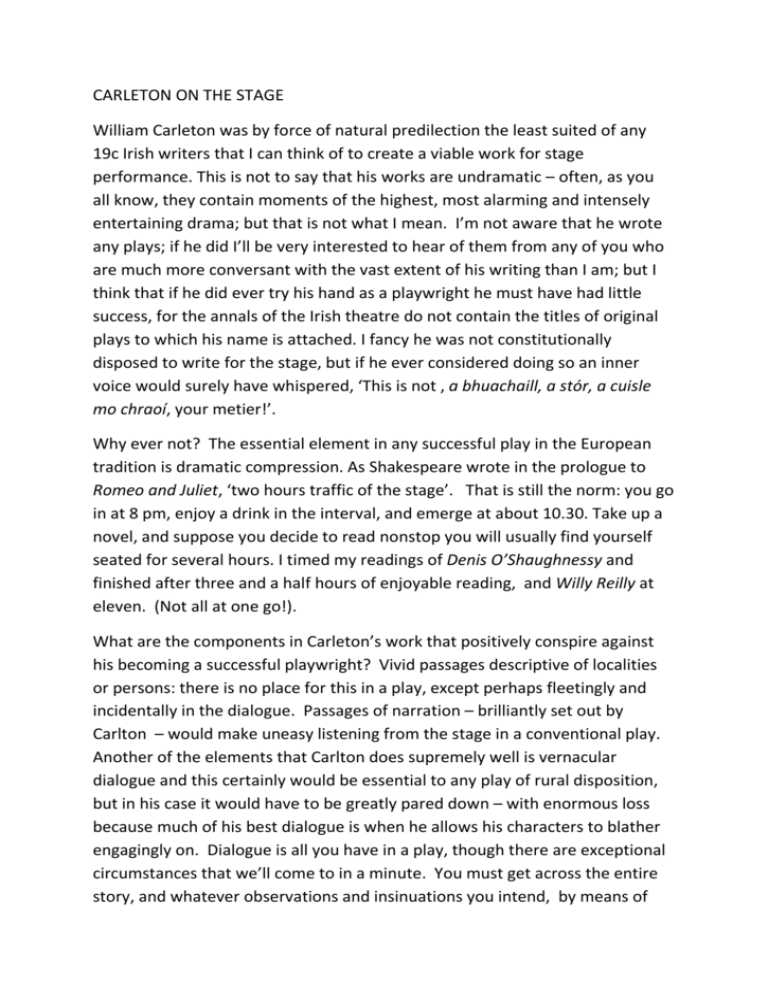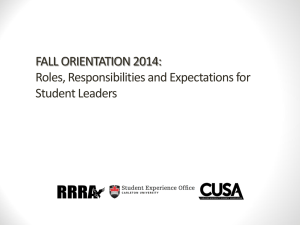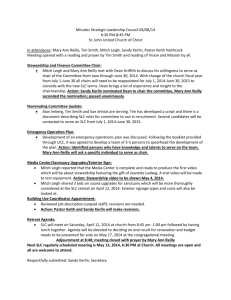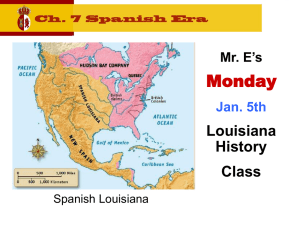carleton on the stage
advertisement

CARLETON ON THE STAGE William Carleton was by force of natural predilection the least suited of any 19c Irish writers that I can think of to create a viable work for stage performance. This is not to say that his works are undramatic – often, as you all know, they contain moments of the highest, most alarming and intensely entertaining drama; but that is not what I mean. I’m not aware that he wrote any plays; if he did I’ll be very interested to hear of them from any of you who are much more conversant with the vast extent of his writing than I am; but I think that if he did ever try his hand as a playwright he must have had little success, for the annals of the Irish theatre do not contain the titles of original plays to which his name is attached. I fancy he was not constitutionally disposed to write for the stage, but if he ever considered doing so an inner voice would surely have whispered, ‘This is not , a bhuachaill, a stór, a cuisle mo chraoí, your metier!’. Why ever not? The essential element in any successful play in the European tradition is dramatic compression. As Shakespeare wrote in the prologue to Romeo and Juliet, ‘two hours traffic of the stage’. That is still the norm: you go in at 8 pm, enjoy a drink in the interval, and emerge at about 10.30. Take up a novel, and suppose you decide to read nonstop you will usually find yourself seated for several hours. I timed my readings of Denis O’Shaughnessy and finished after three and a half hours of enjoyable reading, and Willy Reilly at eleven. (Not all at one go!). What are the components in Carleton’s work that positively conspire against his becoming a successful playwright? Vivid passages descriptive of localities or persons: there is no place for this in a play, except perhaps fleetingly and incidentally in the dialogue. Passages of narration – brilliantly set out by Carlton – would make uneasy listening from the stage in a conventional play. Another of the elements that Carlton does supremely well is vernacular dialogue and this certainly would be essential to any play of rural disposition, but in his case it would have to be greatly pared down – with enormous loss because much of his best dialogue is when he allows his characters to blather engagingly on. Dialogue is all you have in a play, though there are exceptional circumstances that we’ll come to in a minute. You must get across the entire story, and whatever observations and insinuations you intend, by means of dialogue between two or more persons, reducing a substantial work of prose fiction, it might be said, to a series of conversations. But, you will be saying, what of the numerous stage and screen adaptations of the novels of, say, Dickens, since the time of publication right up to the present? Well, converting a work of prose fiction to the screen is much simpler than doing so for the stage mainly because of the flexibility of film and its propensity for rapid changes of scene and the way in which a series of visual images can rapidly and effectively suggest textual and indeed sub-textual allusions; yet there has never been a screen version of Dickens that has not in one way or another infuriated admirers of the original. Where the stage is concerned I have to say that of the many adaptations I’ve seen of Dickens none has in any sense captured the great span of the original though some have brilliantly represented certain elements of it and I think this is the best one can hope for in the passage from prose fiction to play Here is Carleton in classic narrative/descriptive mode: “The highest object of an Irish peasant’s ambition is to see his son a priest. Whenever a farmer happens to have a large family, he usually destines one of them for the church, if his circumstances are at all such as can enable him to afford the boy a proper education. This youth becomes the centre in which all the affections of the family meet. He is cherished, humoured in all his caprices, indulged in his boyish predilections and raised over the heads of his brothers, independently of all personal or relative merit in himself. The consequence is that he gradually becomes self-willed, proud and arrogant, often to an offensive degree; but all this is frequently mixed up with a lofty bombast and an undercurrent of strong disguised affectation that render his early life remarkably ludicrous… Indeed the pranks of pedantry, the pretentions to knowledge …render these scions of divinity … the most interesting and comical class, perhaps, to be found in this kingdom...” To change such a passage into stage dialogue would be a formidable task; the greatest losses would be the humorous slant and the elusive rhythm of Carleton’s prose. But the task has been successfully attempted, and I’m going to give two very different instances. They are different mainly because they were made in two different centuries and they follow theatrical fashion appropriate to those centuries. One was actually written and performed during Carleton’s lifetime, Willy Reilly and His Dear Cooleen Bawn – Carleton’s phonetic transcriptions of Irish-language words are even more irritating than Yeats’. I will leave it to any of you with intimate biographical knowledge to tell me if he ever attended a performance and what his reaction may have been. The other dramatization was made in the mid-20th century at a time when Carleton’s name had grown unfamiliar to the general public: Denis O’Shaughnessy Going To Maynooth, or, as it’s sometimes printed, simply Going To Maynooth. The latter was successful largely because the modern playwright was skilled in conveying the essentials of one literary medium to another. I’m alluding to Maureen Charlton whose Going to Maynooth was presented at the Gate Theatre in Dublin in the week starting February 10th 1969 with a distinguished cast well known for their understanding of rural character and for their use of understated comic delivery. I’ll remind you very briefly of the story. Denis is the eldest son of a well-to-do farmer. It has always been assumed that he will ‘go for the church’ and this he does with his parents’ indulgence, the tutelage of the unctuous local priest who assures him that he has the makings of a bishop, and his own book-learning in the classics and the writings of the early fathers. So replete with uncoordinated knowledge does he become that he finds it impossible to answer a simple domestic question without a florid display of learned phraseology; he becomes a kind of junior martinet to whom everyone must kow-tow – and indeed they do. He even forbids his brothers and sisters from calling him Dinny: henceforth he is Dionysius O’Shaughnessy. He boorishly rejects Susan, the lovely neighbour with whom he has had a long-time understanding, telling her that he is destined ‘for higher office’ and assuring her that there are plenty of young men around from whom she can select a tolerable husband. She, as it emerges, is very much in love and, in the manner of the time and not without reason, she falls into a decline. Denis goes to meet the bishop for his entrance examination to the seminary. The bishop fails him, and he has to face the humiliation of returning home to the festivities prematurely organised in his honour – and to the humiliation of the sponsoring priest and the enormous distress of his family. There follows a kind of Brown Envelope sequence when pressure is put on the bishop by the p.p. through the bishop’s brother, a barrister. There is the business of a fine young colt and a delivery of exotic foreign plants for His Lordship’s celebrated conservatory; it shortly emerges that Denis ‘misinterpreted’ the bishop’s decision and he finally does go to Maynooth. There he learns that his ambition has been misapplied. This is not the calling to which he should dedicate himself, and he, too, falls into a decline. After a year he hurries home to attend his father’s death bed. He is now a wisp of his former himself, chastened into dejection. He never returns to Maynooth; recognising the virtues of the simple rural existence. Susan, meantime, has pledged herself to the convent; but she is absolved from this intention. In due course there is a wedding party where, if all had gone according to the preposterous plan, there would have been an ordination. I remind you of the plot of this comic morality tale so as we can look at what alterations Maureen Charlton made to accommodate it to the playhouse. She divided the story into two acts, the first ending where Denis leaves for his examination by the bishop. Each of the two acts is economically divided between three alternating locations – the O’Shaugnessy kitchen, the bishop’s study and ‘a quiet country glade’ . (The ‘glade’ may be taken as indicating anywhere in which a conversation can conveniently take place – the lieu vague of French classical drama or ‘the path through the woods’ of panto.) In the blackout between each scene we, the audience, are addressed by the voice of William Carleton: this device conveniently allows two minutes for the change of set – the Gate does not have flying facilities – and even more appropriately lets the Great Originator speak some of his own narrative sentences, moving the drama forward and informing us where the next part of the action is taking place: so there is an element of narration that I said was unusual in the theatre. “Denis was not insensible to female beauty”, Carleton tells us over the intercom, no doubt the intended hint of irony contained in the actor’s voice. A study of the script shows Maureen Charlton judiciously selecting the best lines of dialogue from salient scenes. For example, in the meeting between Denis and Susan when he callously announces his intention of becoming a priest Ms Charlton gives greater emphasis than there is in the book to Susan’s anger, thus rendering her attitude to the fait-accompli much more believable. Ms Charlton’s deft sense of selectivity in picking out the essentials in the comic dialogue may be instanced by the following: long before Denis goes to Maynooth there is intense family speculation as to the ultimate domestic life at The Presbytery. Says his sister Norah: “Who’ll keep house for you? You know that a priest can’t live without a housekeeper?” “That”, replies Denis,” is and will be the most difficult point on which to accomplish a satisfactory determination. I have nieces enough, however”. Nora looks abashed. “There’s Peter Finnegan’s eldest daughter, Mary; and Hugh Tracey’s Ailsey”, Norah’s face falls, “together with several yet to be endowed with existence, all of whom will be brisk candidates for the situation.” All the family hang as if stupefied on his words, and then his mother remarks, ”I don’t think you’ll ever get anyone who’d be more comfortable about you that you own mother!” Denis looks startled. She continues: “What do you think of taking myself, Denis?” To which Denis replies jovially, “Ay, but consider the accomplishments in the culinary art which will be necessary for my housekeeper to know. How would you, for instance, dress a dinner for the bishop if he happened to pay me a visit?” His mother replies, “No, I’d never do it at all. No no, but I’ll sit in the corner upon a chair you’ll get made for me , chatting to the servants and sometimes discoursing to the neighbour that’ll come and enquire for you, and they’ll be sitting in the kitchen waiting till you get through your office. Just let me have that, Denis a chora, and I’ll be happy as the day’s long.” His father adds: “And I on the other side of the fire, Maeve, chatting to you across the hearth, proud to see the bishop and the gentlemen about him!” Denis assumes a kindly air, saying, “And so you shall, both of you – you, father, at one side of the hob, and my mother here at the other, the king and queen of my culinary dominions.” These exchanges are of course far more protracted in the book. It is also from the body language and the facial expressions of the actors to which so much of the comical import is transferred. In theatre production, the script is only one component: the visual presentation provides so much more. In this presentation clearly the vocal component was also important – a recitation of the rosary led by a sonorous Denis, and relevant period songs selected by Ms Charlton that are not in the book, such as the ballad ‘The Pope he leads a happy life/He knows no care of marriage strife/He drinks the best of Rhenish wine/I would the Pope’s gay life were mine;/But yet all happy’s not his life/He loves no maid, nor wedded wife/ Nor child hath he to cheer his hope:/I would not wish to be the Pope. Et cetera. Some of the ‘moments’ of the book transfer very effectively to the stage – such as Denis’s delayed return from his first interview with the bishop when the assembled merrymakers are waiting to toast him; on the stage there is a distinct irony in that the partygoers put his woeful appearance down to exhaustion after the journey while the theatre audience immediately catches on that the interview can not have gone well; what takes some paragraphs of description in the book is effectively exposed in a few seconds on the stage by means of this visual shorthand. What Maureen Charlton seems to have been unable to accommodate, or deliberately decided not to accommodate, was much of the criticism inherent in the book of the forms, usages and local cultural traditions of the Roman Catholic church. She clearly opted to concentrate on the humorous characterisation and the comic dialogue to the exclusion of the more socially diagnostic or philosophic elements. Certainly this results in a welcome consistency of style where Carleton is inclined to meander, tilting at various windmills on his way. I had hoped to find that Ms Charlton had invented a more satisfactory ending, but she only manages to do this in part. You will recall that in the book two local men, Andy Cahill and Patrick Murray, meet by the roadside and from their chat we learn that two years have passed since Denis O’Shaughnessy’s entry to Maynooth, that his father has died, he has lost his vocation, has returned to the farm and that the people now assembled at the church are in fact attending his wedding to Susan Connor. The two peasants decide to join the throng, and Carleton concludes his story by telling us that Andy Cahill “got drunk and danced and sung at Denis O’Shaughnessy’s wedding, which we are bound to say was the longest, the most hospitable and most frolicsome that ever has been remembered in the parish from that day to the present”. I think you will agree that this conclusion is a bit of a disappointment, for Carleton does not tell us in full how the traduced Susan Conor, la traviata of this tale, took Denis back into her heart. All we are given is Andy telling Patrick that Denis “soodhered and palavered a daughter of Owen Conor” and that “she herself wasn’t for marrying him in regard to a vow she had, but there’s no doubt he made her fond of him for he has a tongue that’d make black white…” This is hardly satisfactory, for the reader needs to observe the process of her extraordinary change rather than hear it reported at second hand. The fact is, Susan’s conversion is hardly believable, and to make it so Carleton should have allowed us to assimilate its gradual development . Maureen Charlton did not improve on this ending except in the staging of the wedding party to make an up-beat finale, and by introducing the author’s valedictory voice over the merrymaking, a neat technical device. Aodhan Madden, writing in the Evening Press of February 2, 1969, said that “Denis O’Shaughnessy is a full-blooded chunk of mid-19th century rural Irishry,…it evokes the life-throb of an age long gone, an age delicate, gentle, rowdy, passionate and profound…but most of its characteristics are still with us. The rare and thankful thing about Maureen Charlton’s competent and indeed creative dramatization is that it makes us laugh and laugh lovingly at the life that this half-forgotten chronicler so humorously wrote about… Miss Charlton can lift her hat to her cast. They are perfect, every one of them. But I would single out Bill Golding for a very special hat shake. He takes up most of the stage for most of the play as Denis… Martin Dempsey plays the pouchy political and very stomach-conscious PP with a very engaging eye twinkle. Then there’s Dominic Roche’s tired and tiresome Bishop, … And the parents , Edward Byrne and Nora O’Mahony … Simple and folksy, proud of their son’s priestly ways and very much the archetypal Catholic mother and father who have reared a son for Rome… What wonderful characters Carleton created…” There is no programme note as to who recorded the voice of Carleton; one of the surviving actors thinks it may have been Ray McAnnaly, which would certainly have been good casting. Seamus Kelly, the Irish Times senior critic, was not so enthusiastic: “We have the word of reputable critics like Benedict Kiely and Patrick Kavanagh that William Carleton was a major writer, and while some of his readers might not subscribe to Kavanagh’s equation of Carleton with Cervantes many might tend to place him as high as Canon Sheehan. It is all a matter of judgement, as the man said when he tried to sell an ass for a thoroughbred…” He goes on to praise the “hardworking” cast. Desmond Rushe, the chief theatre critic of the Irish Independent, wrote, inter alia, that “the O’Shaughnessy odessey bristles with humour and comedy situations… I thoroughly recommend it.” If we take all the critiques of any play, pro and con, and shake them all together in a hat, we will probably arrive at what the theatre audience thinks. I have spoken to two of the actors, Bill Golding and Derry Power, and both agree that their audiences were warm and responsive; Bill Golding said that he went home each evening feeling that they had spread considerable enjoyment. The critical question was whether Carlton was worth adapting in the first place and whether Maureen Charlton’s adaptation worked. The surviving members of the cast assure me that it did – and, as actors are noted for finding fault with the writing of any play in which they appear, I am inclined to give credit to their opinion. *** Willy Reilly and his Dear Cooleen Bawn was the most popular of Carleton’s works, having passed through 50 editions. My authority is Stephen Brown, writing in 1916, and he should know. The book first appeared in 1855 and a stage version followed very quickly. The adaptation was made by the actorproducer James Foster O’Neill and was passed by the Lord Chamberlin as suitable for public presentation in England, Scotland and Wales on 29 April 1861 for the Marylebone Theatre, London, where it was presented on the 5th of May of the same year with, the producer tells us, ‘new and original scenes, situations and effects’ –so I didn’t expect it to follow Carleton’s text very carefully. I’ve compared two scripts, the handwritten one by O’Neill and a typed copy of much later date which resembles it fairly closely, though there are a few interesting changes: the second may have been a plagiarised version of the first. Often actors moving from one company to another would transcribe their memorised repertoire, and new productions would be mounted to suit the different casting and scenography. This typed script was used by the J.B. Carrickford touring company in the early 20c and subsequently by Nicholas Carrickford as late as the 1950s. The last professional performance of which I have only the remotest certainty took place at Blackrock, a marine suburb of Dundalk, in or around 1955. It may have been performed later by amateur groups. The story is set, Carleton tells us, “at that unhappy period when the Penal Laws were in deadly and terrible operation, and we need not be surprised that a young and handsome Catholic should earn a boundless popularity especially from those of his own creed by the daring and resolute act of taking away a Protestant heiress – the daughter of a persecutor – whose fame, from her loveliness and accomplishments, had already become proverbial…”. ‘Taking away’ is rather a strong phrase, suggesting abduction, for Helen Folliard, the ‘Cooleen Bawn’, is just as sure of her feelings for Willy Reilly as he is for her. I have to confess that the title of the book, Willy Reilly and his Dear Cooleen Bawn, suggested to me when I first came across it about 1957 that the central characters would be drawn from a rustic, not to say lowly, section of society: but my ignorant assumption was confounded when I discovered that both Mr Reilly and Miss Folliard are landed gentry, their only difference being that of religion, which both are at pains to ignore but is central to the story and was plainly of supreme interest to Carleton and his readers. In the early 18c, as we all know, Roman Catholics were prevented from owning specified property and marriage between the two religions was less imaginable then that at any other time: the book is therefore an historical novel of sorts and the play, in 1861, would have been perceived as a ‘period’ drama. Moreover, the play is melodrama, the fashionable form of theatre in the Victorian age. Melodrama attracts the attention of the audience by its swiftmoving story, its rhetorical style, its constant juxtaposition of pathos and comedy (Carleton is ideal for this) its reliance on sensational turns of plot such as help arriving just in the nick of time. There was a strong commercial demand for Irish melodrama throughout the British Isles during the latter half of the 19c. Why was this? Well, Ireland provided something unusual that was at once recognisably close to home yet comfortably remote: rebellion, eviction, agrarian disturbance, famine, political assassination, each topic capable of providing intriguing situations of a kind unlikely to have been inspired in rural Shropshire or urban Bath. There were 570 licenced theatres throughout the British Isles all clamouring for new material; of the six plays that took the most money in 1895, for example, three were Irish. It was in this milieu that we must imagine J.F.O’Neill’s Willy Reilly. The scripts differ considerably in their presentation. The O’Neill script simply mentions the location at the head of each of its fourteen scenes – such as ‘A Landscape’ , ‘A Court’. The Carrickford version is more explicit: ‘Front Landscape’ and ‘Sligo Court House’, and more technical: what ‘Front Landscape’ tells us is that the scene is played in front of a painted cloth which would descend at the close of a full-stage scene; a front scene was normally quite short and usually involved only three or four characters; while they were proceeding with their part in the story the stagehands would be rapidly resetting the full stage behind them so that the front cloth would shortly be flown to reveal (in this instance) the interior of the Sligo Court House with all the participants in their allotted places – the Judge in the centre on a raised bench (we are told), the Clerk on the level below, the defendant and his council on stage right, the council for the Crown on stage left beside the witness box, etc etc. (The alternating front and full-stage scheme survives to this day in Christmas pantomime.) The Carrickford script specifies where the actors are to enter and exit and how they dispose themselves at the close of each scene. It also specifies music to accompany heightened moments of action: “Lively Irish music but played pp”, “The Harp that Once”, “Let Erin Remember”, etc. Melodrama originally meant music drama and here we have it true to type. The following description is taken from a parallel reading of the two scripts. Where there are conspicuous differences I will mention them. The characters who populate the book and the scripts are: Mr Folliard, a wealthy Protestant landlord and magistrate; Randall O’Donnell, known as the Red Rapparee, who has a grudge against Folliard for sentencing his uncle to transportation for practising as a priest – Folliard, it is stressed in both book and play, was carrying out a legal obligation: in private life he is generous to all comers and even employs Catholics, but O’Donnell’s sense of injustice mounts to the extent of forming an illegal band whose intention is to subvert authority by violent means. His band intercepts Folliard and his servant Andy on a lonely road and are about to commit murder when Willy Reilly appears, holds up the subversives at gunpoint and sends them packing. Folliard invites this ‘noble young fellow’ to his home where he introduces him to his daughter Helen – known locally as ‘the Cooleen Bawn’ – as ‘my saviour’. In the course of a social evening their mutual attraction is kindled. It emerges that Folliard has made an arrangement for Helen to marry a neighbour, Sir Robert Whitecraft, to whom she has a distinct aversion. The naïve Folliard believes that in a ladylike way his daughter ‘pretends not to care for him’ – he doesn’t care for him much either but he is a ‘suitable’ match: a wealthy and aristocratic Protestant. It does not occur to this dim dad that in introducing Willy Reilly to his daughter he is starting something. In both the book and the dramatisations this is well signalled. A local simpleton tells Reilly that he overheard Red O’Donnell planning to attack the Folliard mansion, rob it ‘and dishonour the Cooleen Bawn’; Reilly has the good sense not to disregard this unlikely intelligence and sends a posse of his tenants to expel the attack, which is foiled to the immense gratitude of Folliard, but O’Donnell has vanished in the affray. In a touching scene Reilly informs Helen that because of the religious impediment she must not think of him as a suitor; but she is of a different mind: they will marry abroad and neither will change religion. (For the time being her father sees Reilly as a suitable son-in-law and she may marry him provided he converts – “I believe a papist can be a gentleman and a man of honour!”, declares Folliard magnanimously.) Sir Robert Whitecraft is warned by a wise woman that “a rival has a footing in the Folliard house”; he engages the Red Rapparee O’Donnell as accomplice and tells Folliard that Reilly bribed O’Donnell to capture Helen , explaining that the incidents of the hold-up and the break-in were masterminded by ‘that Jesuit Reilly’ so as he could play the hero and then have social access to the lovely girl; O’Donnell is then introduced to Folliard and shows him the 50 sovereign bribe – of course the money has been supplied by Sir Robert but Folliard swallows the story and expresses his determination to transport Reilly for ‘possession of firearms’, unlawful for Catholics. Sir Robert invites Folliard to confirm his daughter’s hand, which he does. They ignore a sneeze from the closet and go their separate ways. Out of the closet step Helen’s maid Nelly and her fiancé Fergus; they sally forth to warn Willy Reilly and the Cooleen Bawn of what they have overheard. Fergus Reilly is Willy Reilly’s foster brother. He and Nelly O’Connor are comic characters, part of a long line of loyal and loquacious couples of the servant class in Irish melodrama whose function is to prevent the action from becoming too heavy. Fergus is ‘on the run ’ from the military. In a richly entertaining scene in Nelly’s cabin soldiers are seen approaching and Nelly disguises Fergus in her own clothes. He poses as her mother, deftly keeping a trooper at a distance (when he attempts to make free with Nelly) by means of ambiguous insults, finally inviting him to taste Nelly’s delicious stirabout which scalds his mouth. O’Neill makes more use of Fergus and Nelly than does Carrickford, but it was a Carrickford production that Jack Yeats saw at the Mechanics’ Theatre in Dublin about 1900 after which he painted a delightful watercolour of this hilarious scene. Sean O’Casey also saw it at an unrecorded date but almost certainly about the same time. By then the melodramatic mode was very much on the wane; and when the play was revived by the Carrickford company in the 1940s melodrama was entirely démodé and reduced to Muintir na Tíre halls. Well: Fergus hurries to Willly Reilly, informs him that Sligo jail may be his destination and gives him a note from Helen who makes a tryst at her back gate for that night. Soldiers approach, Reilly hides and Fergus creates a comic diversion by pretending to be a beggar. Meanwhile Red O’Donnell, instructed by Sir Robert, acquires a suit of Reilly’s; wearing it he robs the Sheriff. Sir Robert, listening to the distraught Sheriff’s description of the attack, declares the robber can only have been Willy Reilly: he and his men are looking for the very same villain! That night, with Fergus as look-out, Reilly meets Helen and tells her they must part; but she is determined to elope with him to the continent. He reluctantly agrees. She gives him a box of her mother’s jewels for safe keeping until they meet on the quayside, where ‘a boat will convey them to happiness’. Nelly and Fergus will accompany them. Sir Robert Whitecraft , searching Reilly’s house with troopers, discovers arms: this is warrant enough to burn ‘the rebel’s den’. They do not know that Helen is concealed within. As the house goes up in flames Reilly and Fergus arrive in the nick of time and save her but Reilly is arrested. Helen, not surprisingly, loses her mind; her troubled parent vows that if she’s restored to health he’ll consent to her marriage, but such a union is unlikely for Reilly will be hanged for robbing the Sheriff. Fergus and Nelly overhear Red O’Donnell boasting that it was he in disguise who successfully robbed the Sheriff. Nelly brazenly solicits O’Donnell and ‘makes love to him’; he responds, and while they are having a little grope she steals his pistols and holds him up. The scene ends with Nelly and Fergus hooshing O’Donnell offstage, bound for Sligo Court House! In the Courtroom Helen has an opportunity of passing a ring to Reilly as token of her undying love. Sir Robert presses charges against Reilly. Fergus gives evidence that O’Donnell stole Reilly’s clothes and robbed the Sheriff. O’Donnell confesses, putting the blame on Sir Robert who employed him and adding that burning a house is a capital crime, “so if I hang, so shall Sir Robert Whitecraft with me!” The judge orders the arrest of Sir Robert for arson and he is removed alongside O’Donnell. (One can imagine the audience hissing them as they go.) Helen gives evidence that the jewels found on the prisoner were given to him by herself for safe keeping. Here the two stage versions differ substantially. The O’Neill or earlier version ends in the Courtroom where Reilly is acquitted of his alleged crimes. There are tearful speeches of gratitude – Reilly thanks Fergus for saving his life and Fergus declares that it was Nelly who was responsible for the apprehension of the Red Rapparee O’Donnell. Fergus and Nelly will be married “when you marry Miss Folliard, and we’ll have a wedding of it and no mistake! We’ll laugh and dance and drink and sing/ Until the morning dawn/ In honour of Willy Reilly/ And his own dear Cooleen Bawn!” Cheers, music, a dance and curtain. The Carrickford ending is much closer to the book, though there is one major departure. In the court Reilly is cleared of robbery but sentenced to seven years transportation for his other alleged crimes. Helen faints and the curtain falls. This is not the end of the play: there is an intermission and the curtain rises on the exterior of Folliard’s mansion almost eight years later. Helen has become a mindless recluse. Sir Robert, having served his sentence for arson, approaches the now aged Folliard, asking for his daughter’s hand. He is refused. The scene changes to a front cloth depicting a bye-road where Fergus meets a Stranger who asks pointedly for information about the neighbourhood, which Fergus gives. The stranger then reveals himself as Willy Reilly, all the way from Van Diemen’s land! Folliard welcomes him, abjuring him to approach the unfortunate Helen with circumspection: but sight of the ring jolts her memory, and her mind returns to its normal state. Fergus, who must have the longest ears in Sligo, overhears that Sir Robert has engaged the now released O’Donnell to assist him once again in carrying off the Cooleen Bawn; but he and the stalwart Nelly are waiting for them and they overpower the villains – the stage directions to not explain how. Reilly enters, recognises the two prone bodies and enquires if they are dead? “No”, replies Fergus, “Sure I only winged them, they’ll both live to be hanged yet!” This incident is entirely the invention of the author of the Carrickford script, for in the book both Sir Robert and the Red Rapparee O’Donnell have been hanged seven years previously: the carefully choreographed final affray in Folliard’s house has clearly been introduced to add the exhilaration of retribution to the conclusion of the piece. On Helen’s final appearance her customary good spirits have been restored. She asks her father “Is it really true or am I dreaming?” Reilly replies for him, “True! And never again will Willy Reilly be parted from his dear Cooleen Bawn!” The persons in the play are fairly one-dimensional, but the adaptors do adhere to their individual characteristics and motivations. For our taste the play has too much action and not enough substance – but that is the nature of popular melodrama. The audience was not looking for plausibility but adventure and entertainment in the way that you or I might attend Star Wars in the cinema. Of course these scripts do read hokily but we have to remember that the actors would have added the strength of conviction: they would have papered over the cracks in the dramatic plaster. What surprised me greatly was how closely the scripts regenerate the atmosphere and attitude of the novel; but the novel, like David Copperfield and Pride and Prejudice, remains far superior. *** There is a curious play called The Shamrock and the Rose by an English playwright, Walter Reynolds, which did the rounds towards the close of the 19c. The Shamrock and the Rose is placed in an unspecified period – it is really impossible to discern whether pre- or post-famine: it seems more like the latter but I think the author wasn’t too much concerned with historical verities. It opened at the Royal Theatre, Huddersfield, on 7 October 1891, finding its way on tour to the Grand Theatre, London, where the critic of The Era newspaper (who must have seen it elsewhere) remarked that ‘sundry excesses have been lopped off and the piece has been strengthened in many places’. When it arrived at the Grand Opera House, Belfast, in March 1896 – one of the earliest plays presented there, for the Opera House opened in 1995 – the publicity stated that it had already achieved 2,500 performances. The diarist and theatre correspondent Joseph Holloway saw it at the Queen’s Theatre in Dublin the following year when he found it “too grotesque for anything”, adding in his humorous mixed-metaphor manner that “an English company in Irish drama is like a fish out of water: they never open their mouth but they put their foot in it …” The heroine of this much criticised – though immensely popular – play is an English orphan, Miss Rose Riversdale, who resides with her generous Irish uncle and guardian in a rural Ireland fraught with civil disturbance. Johnny Desmond, a tenant farmer, is in love with Rose, and she with him. Johnny is prominent in the No-Mercy League for agrarian reform . In a parallel romance on a lower social level ‘a broth of a boy’ called Dandy Dunraven is courting a Miss Morna Moore. A disreputable trio of scoundrels dissipates what might otherwise be a rural idyll : Mixy Mulcahy, a ‘Mergency Man, Nicholas Flint, a process server and his son Stephen who is described as ‘a Government spy’. It is interesting that the English author should characterise these three as the baddies. A tangle of allegiances and treacheries unfolds – political and personal. There are evictions, the Flints cheat Dandy of his holding, and in a nocturnal cliff-top incident the elder Flint is murdered, it is assumed by Johnny Desmond and his agrarian leaguers: of course it is not. Rose conceals Johnny but he is found and imprisoned; the intrepid Dandy organises his escape. Stephen Flint, who had cast his eye on Danny’s Morna and forced her into marriage, tires of her and informs her that their union is not legal; she, regarding herself therefore as a ‘dishonoured woman’ flees from the neighbourhood but the faithful Dandy finds her and brings her to the abandoned watermill where he is at present lodging. Dandy examines Morna’s ‘marriage lines’ and goes in search of legal and religious aid. Stephen, discovering Morna’s whereabouts and fearing his exposure, approaches the mill with his accomplice Mixy Mulcahy. In the course of a violent altercation with Morna, Stephen’s hat falls off, revealing a scar. Morna surmises that the scar must have been dealt by Danny when he came to the aid of a man who was being murdered – it was night and Danny did not recognise aggressor or victim, Stephen Flint or his father. ‘Parricide!’ screams Morna. Stephen and Mixy place Morna in a chest which they intend to drop into the mill race, but she is saved in a remarkable coup-de-théâatre by Danny involving a rowing- boat, a mill-wheel and a length of rope. The drama proceeds on its melodramatic – in the pejorative sense – course, ending with Danny and Morna united, and, in spite of their differences – national and social – so are the sweet English Rose and the Irish Johnny. There is a sentimental finale when ‘the shamrock and the rose’ are toasted, as the curtain falls. And not before its time. Unfortunately none of the critics of the day picked up on what is most perplexing about the provenance of this story. Where did Walter Reynolds find his material? The location is “Findramore” which certainly rings bells for readers of Carleton. The town of Carrickmacross is prominent. (No author in the history of Irish or English drama and prose fiction but William Carleton has ever laid a scene in Carrickmacross .) Some of the play, when not indulging in exaggerated physical action, does exude the intense and insidious feeling of evil that pervades Wildgoose Lodge . Certainly the Ribbonmen of that tale have their counterpart in Johnny Desmond’s NoMercy League. I mention this blathersome play at rather too great length because of my own perplexity as to its inspiration, and in the hope that one of you will lead me to a satisfactory explanation – a story or trait of William Carleton’s that I have yet to read. I wish to thank Michael Fisher for encouraging me to research Carleton’s stage progeny and for inviting me to disclose the results before this distinguished audience. Christopher Fitz-Simon August, 2012. [53 kb 47.00+]








